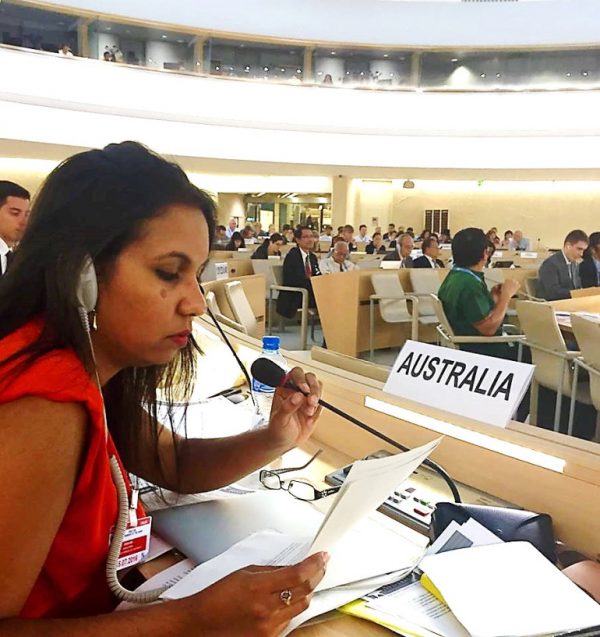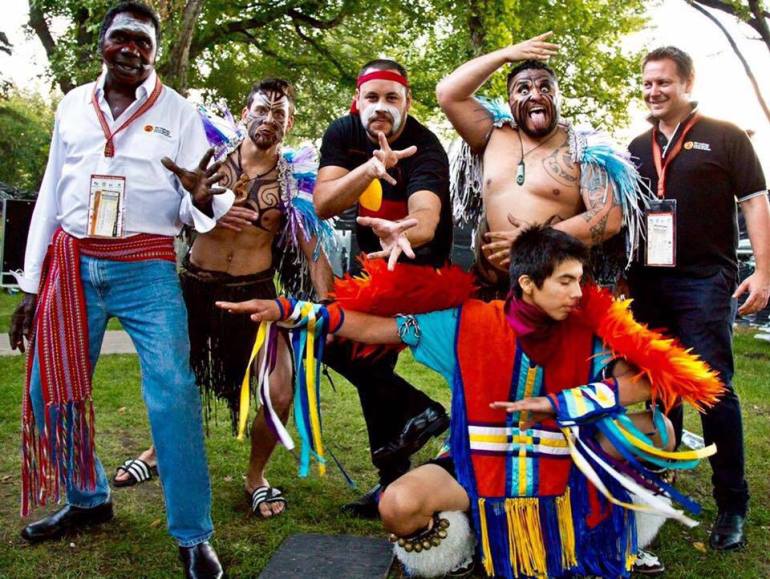This year I have the privilege of being an “Ambassador” for the 2018 World Indigenous Business Forum, where my multiple identities converge.
It starts with my family. When my grandmother was a small child, she was designated a half-caste because she had an Aboriginal mother and an Italian father. After desperate attempts to evade capture, she was abducted from her family in the Western Desert and placed into a mission. As the landmark Bringing them home report found, “the predominant aim of Indigenous child removals was the absorption or assimilation of the children into the wider, non-Indigenous, community so that their unique cultural values and ethnic identities would disappear.” At that time, the Chief Protector of Aborigines in Western Australia had nearly complete control over Aboriginal people, right down to whether my grandmother could earn a wage or even enter a town. Australia continues to spend billions each year to address the ongoing inter-generational trauma from these policies.

As an Aboriginal woman managing policy for the Australian Government’s overseas aid program, I consider Australia to be a cautionary tale for what happens when a country excludes indigenous populations from development: vast resources must be spent later in a retrospective attempt to ‘close the gap’ in outcomes between indigenous and non-indigenous peoples.
To be clear, international development donors like Australia seek to make development assistance unnecessary as developing countries increase their access to resources and expertise to manage their own development. The thing is though, indigenous peoples have their own concepts of development, based on their traditional values, visions, and priorities, and these often differ from the policies of their governments and international donors like Australia.
So what happens when governments in developing countries don’t take into account the different perspectives of indigenous peoples? And what happens when international donors don’t either? Indigenous peoples get “left behind” from development, even if not by intent.
A better approach is that offered by the World Indigenous Business Forum (WIBF), a platform that engages indigenous people in global economic and development discussions, acknowledging the central role of indigenous leaders in their community’s development. Australia strongly advocates for the use of indigenous businesses in the delivery of aid programs and is the only development donor engaging with the WIBF. The forum demonstrates that the rise of indigenous businesses means that there is a different way of working in indigenous communities. Business provides the tools and opportunities for indigenous communities to fund and self-determine their own development, based on their priorities and entirely independent of government.
I know that some people may still be wondering what Indigenous Australians, Aboriginal Canadians, Maori or Native Americans can contribute in developing countries that the World Bank, UN agencies or other traditional development actors cannot. Consider this: it is indigenous peoples who know what it’s like to be invisible in mainstream programs that are often imposed without any reference to indigenous perspectives or needs. And thanks to the rise of the global indigenous business sector, it is indigenous peoples who can win international development contracts to minimise the risk of leaving behind indigenous peoples in developing countries.
Which brings me back to where I began. Within three generations, my family has borne witness to extreme exclusion right through to my own privilege today as someone who has benefitted from the hard won reforms spearheaded by indigenous elders in Australia and around the world. And from 9–11 October 2018, I will take part in the World Indigenous Business Forum, continuing a shared mission with other indigenous peoples to tackle economic exclusion.
This post was first published on the DFAT Blog, and is republished with permission.



Hi Sheena. Have you reflected on the develoment rights of indigeneous Palestinians, both in Israel and those refugees outside wishing to return to Israel? I would love to know your thoughts and what Australia can do to encourage greater support for indigenous rights in Israel, not just for indigenous populations within Israel, but also refugees outside, including those seeking to return to their lands in Israel.
Seeing that Australia is a close friend of Israel, Australian indigenous voices may have more impact on Israeli authorities than (say) Arab voices, or even Asian voices.